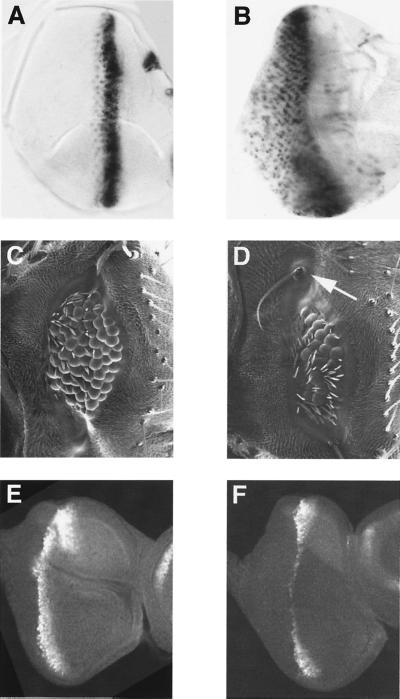Figure 2.
Ectopic ato or scute expression driven by the GAL4–7 line rescues ommatidia. (A) Third instar larval eye disk hybridized to a digoxigenin-labeled ato probe, showing the endogenous ato expression pattern. (B) Third instar larval eye disk of GAL4–7/UAS-lacZ (nuclear) hybridized to a digoxigenin-labeled lacZ probe. The GAL4–7 line drives reporter gene expression in many more cells as compared with the endogenous ato expression, particularly in the posterior field (A). Scanning electron micrographs of compound eyes reveal that ectopic expression of scute (UAS-sc,ato1/GAL4–7,ato1) in ato1 mutant induces ommatidial formation (D), but to a lesser extent than expression of ato (UAS-ato/+; GAL4–7,ato1/ato1) (C). Occasionally, fully developed macrochaete-like sensory organs (arrow in D and Fig. 5) are seen in different areas of scute-rescued eyes. Third instar eye disk from ato1 mutant (E) and ato1 mutant expressing scute (UAS-sc,ato1/GAL4–7,ato1) (F) show similar patterns of staining with an antibody against Atonal. (Magnifications: A and B, ×225; C and D, ×145; E and F, ×200.)

